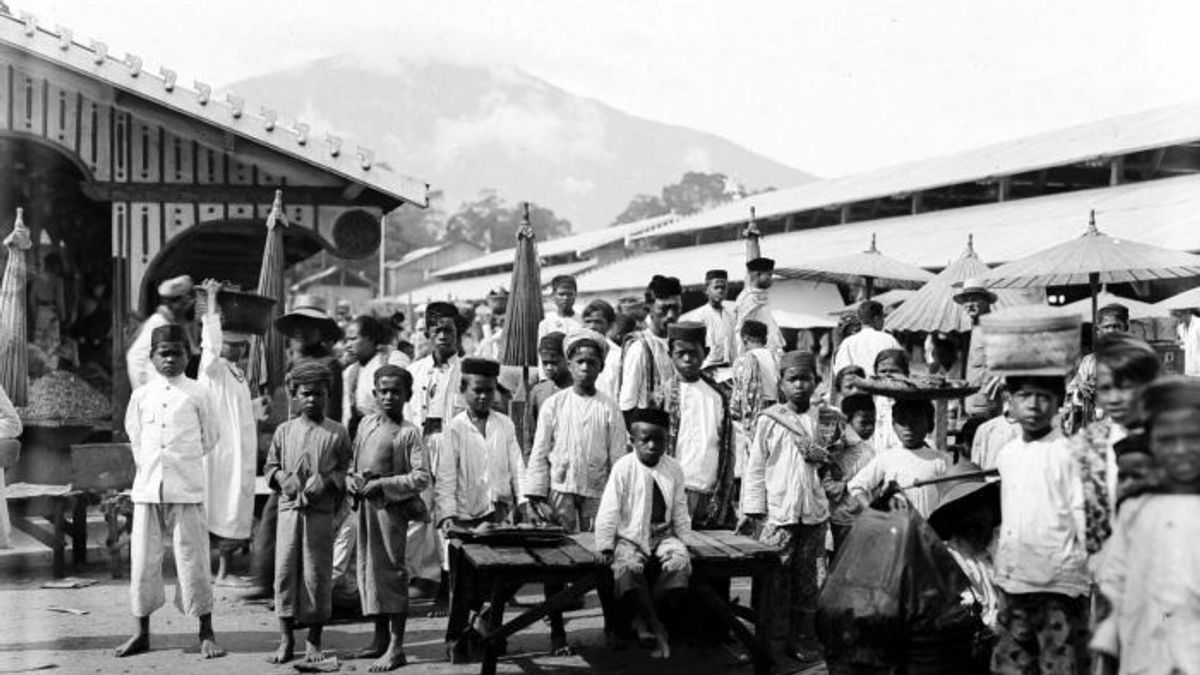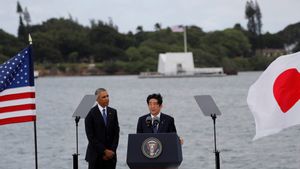JAKARTA - Muhamad Radjab is a reliable old journalist. His recording of the nation's history is a valuable contribution. The dynamics of the revolution in Sumatra, for example. He was one of the journalists who participated in the expedition to Sumatra. The celebration of the Ministry of Information was not wasted. Radjab had the opportunity to observe various dynamics. Radjab also felt an adventure that was second to none. He witnessed firsthand the recklessness of the fighters to death which was common in the revolutionary era.
It is possible that the man whose full name is Muhamad Radjab Sutan Maradjo is not as popular as the journalists Rosihan Anwar and BM Diah. But in the world of journalism, there is no denying its role. He is good at slipping criticism. His sharpness in observing events and thinking became the estuary.
For him, writing is revealing facts. Nothing is afraid of him as long as he is on the path of truth. His critical power had even existed long before he set foot in the capital and had a career as a journalist. He has been critical since he was a teenager. Or since he was still in his hometown in the village around Lake Singkarak in 1913-1928. Since he was a teenager he has been able to see the social realities that occur, one of which is the culture of wandering.
He said the youths in his hometown chose to migrate not only because they wanted to be rich. The only reason boils down to feeling embarrassed. For a young man whose age has had to go abroad, but still in the village is like a disgrace. No girl's parents would be willing to propose to a young man who only spent time in the village.
The labels of lazy, unemployed, and the like are attached to those who do not go abroad. It means choosing not to wander is a sad choice. After all, whoever wanders is believed to be high in rank, when they return to their village they dress up like famous people. As a sign of their success in overseas.
“Living in the village is a shame, because there are no girls' parents who will ask for a hand. And betel nut, it seems, an indicator of self-esteem. Not for lack, indeed. After all, in the end, it appears that the socio-economic potential of the village community is limited, to take the opportunity to gain self-esteem. In particular, when prestige begins to be associated with possessions. That is the period that Radjab calls: the rise of the merchants."

"That is, after the traditional and religious groups can no longer be a dream. Radjab grew up precisely at that time. He saw how merchant migrants could return to their hometowns with impressive exhibitions. Not just buying satay on market days. They walked in tweed coats, silk Bugis sarongs, European shoes and gold pocket watches. They carry baskets of souvenirs,” said Goenawan Mohamad in his writing in Tempo Magazine entitled Rebellion Radjab (1986).
His comments on the habit of wailing were still nothing. Radjab is also famous for daring to criticize religious rites. Including when Padang- Panjang was hit by the 1926 earthquake. He had become a witness to history by perpetuating the sad event. Radjab said that the death toll in his residence was not as much as in Padang-Panjang. However, the people in his village think that the earthquake is a sign of the apocalypse.
All elements of society at that time immediately live religiously. They perpetuate mass repentance. Some people who had never worshiped before, became diligent in worship. Those who have wronged relatives, then immediately apologize. However, slowly after the aftershocks did not occur, the people in his village actually forgot to pray.
“All worshipers, male and female, are no exception. In the markets, white cloth for women's telekung and woven cloth for Silungkang are well sold. In short, throughout Minangkabau people are becoming more obedient to worship. When people are in danger, everyone remembers God," said Muhamad Radjab in his book Childhood in the Village (1950).
Expedition Around Sumatra
His adventures in Jakarta add to Radjab's critical power. Especially since becoming a journalist for the Antara News Agency. His writing is straightforward and critical. This critical power was even more evident when Radjab, who was still a bachelor, was chosen as one of three journalists – Suwardi Tasrif (Indonesian News Daily) & Rinto Alwi (Free Day) – who visited Sumatra in 1947-1948.
The celebration of the Ministry of Information was not wasted by him. He moved to review the situation and development of the Sumatra region since Indonesia was founded. The three journalists who departed had their respective specialties.
Rinto Alwi talked a lot about political issues, developments, and the spirit of struggle. Suwardi Tasrif who focuses on the economy. Meanwhile, Radjab pays a lot of attention to a variety of problems, from issues of society, character, customs, republican fighters, and culture.
“When venturing to Sumatra, Radjab was still a bachelor. He is one of three journalists who are part of the Ministry of Information's entourage who has reviewed the condition and development of points along Andalas Island since the Republic of Indonesia was founded."
"In addition to Radjab, who represents the Antara News Agency, the journalists participating in the group led by Parada Harahap are Suwardi Tasrif (Indonesian News daily) and Rinto Alwi (Free daily). They visited a number of areas, including Kotaraja and Teluk Betung, as well as two neighboring countries: Malaysia and Singapore.” Terang Isma Savitri wrote in Tempo Magazine entitled Journalists and Translators from Minang (2020).
The trip opened his eyes a lot about the meaning of independence for the people of Sumatra. In fact, the revolution does not only contain the romantic content of the struggle. But the revolution changed things. As he found in Prapat. There, he paid a direct visit to the residence of a freedom fighter, Timur Pane. For the invaders, he is a very scary figure. His actions are often radical. Even to the point of cutting his enemies.
In fact, Timur Pane explained to Radjab himself that in the past he was just a trader in the market. Not infrequently he also becomes a rogue (criminal) and a pickpocket in the same place. However, what he is doing now is the fruit of the revolution. He did not want his people to fall back into the hands of the invaders. Fighting is the lesson. All this was done with the provision of courage and recklessness.
A visit to Bukittinggi is also full of stories. Radjab capturing the death of the country's fighters against the Dutch colonialists has become a common thing for the Minangkabau people. The event of a family losing a child, father, or sibling is considered a common everyday sight. Even with a resounding cry.

“Since the revolution, similar events have become commonplace; but it is also strange to see the Minangkabau people take their heroes to the grave. Since the Padri War ended, it can be said that it is rare for Minangkabau people to die in battle."
“So the war was a little foreign to them, and maybe a bit gruesome as well, which is all this time. Decades ago, for the Minangkabau people, it was generally very difficult and sad to be abandoned by their beloved child, father or relative. If someone dies, all that's left is to wail loudly," concluded Muhamad Radjab in his Notes in Sumatra (1949).
*Read other information about HISTORY or read other interesting articles from Detha Arya Tifada.
The English, Chinese, Japanese, Arabic, and French versions are automatically generated by the AI. So there may still be inaccuracies in translating, please always see Indonesian as our main language. (system supported by DigitalSiber.id)










